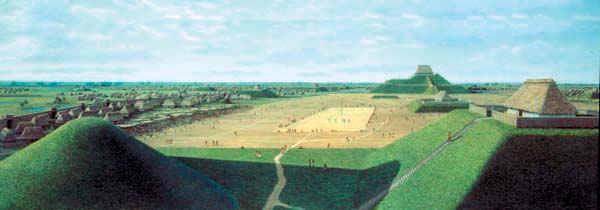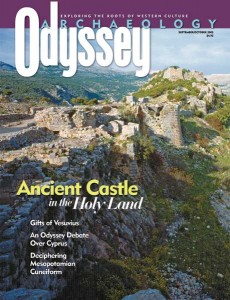Horizons: The Earth-Movers: Cahokia
An ancient metropolis in North America

About a thousand years ago, peoples living along the east bank of the Mississippi River began building a magnificent city about 8 miles east of present-day St. Louis in southern Illinois—a dazzling center of civilization that would eventually be inhabited by as many as 20,000 people.
Over the next 200 years, the mound-builders of Cahokia (the Cahokians were a tribe of Illiniwek Indians who lived in the region by the 17th century) constructed large flat-topped earthen platforms to support temples, a grand ceremonial plaza, chieftains’ palaces, elaborate wood-and-thatch homes for nobles, and charnel houses. Cahokian laborers hauled basket after basket of silty clay from “borrow pits”—still visible today near the site’s eroded earthen mounds—to create a city that covered more than five square miles.

Although scholars refer to Cahokian culture as “Mississippian” (the tribal culture that flourished in the southeastern United States from about 1000 A.D. to 1400 A.D.), just who resided in Cahokia and what motivated them to construct the largest ancient settlement north of Mexico remains a mystery. Some believe that a favorable climate, unusually fertile soil and new strains of corn triggered a population expansion during the Mississippian period—thus laying the ground for a complex and diversified society.
Already a library member? Log in here.
Institution user? Log in with your IP address.

